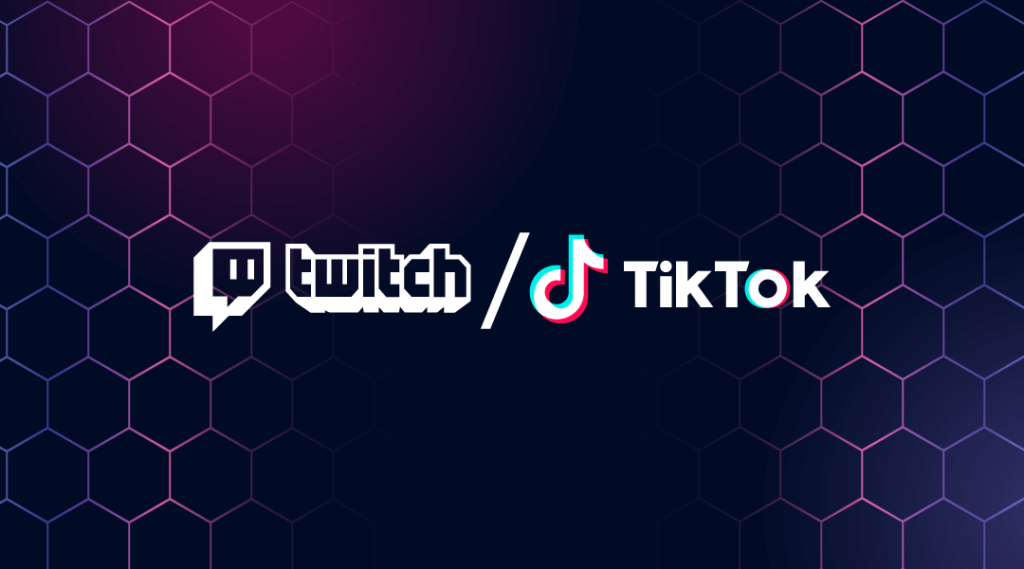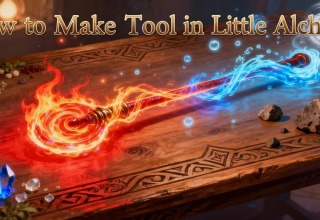
Spend ten minutes on TikTok and you will probably see a Marvel edit, a Skyrim audio, a K-pop fancam and a SpongeBob meme all in the same scroll.
Switch over to Twitch and someone is reacting to those exact clips live while a chat full of emotes spams “LMAO” and “POG.”
This is where we are now. Pop culture and geek culture collide online every single day and the two biggest stages are TikTok and Twitch. One is a chaos engine of fast, viral trends. The other is a digital living room where thousands of people hang out for hours.
Together, they create the strangest, funniest and most connected version of internet culture we have ever seen.
TikTok: Pop Culture on Fast-Forward
TikTok feels like drinking culture through a firehose. A single 12-second clip can turn into a global trend before you even finish your coffee.
A random line from Attack on Titan becomes the soundtrack to thousands of cosplay edits.
A Marvel character saying “I can do this all day” is stitched into workout TikToks, cooking TikToks, even cat TikToks.
A K-pop dance break turns into a challenge with millions of people joining in.
TikTok does not just reflect pop culture. It creates it. Fans remix their favorite shows, movies and games until they become mainstream moments.
And the best part? You do not need to be famous to join in. One clever video can put you on the same feed as an A-list celebrity.
How TikTok Shaped Modern Fandom
Before TikTok, fandoms mostly lived on forums, Tumblr or Twitter threads. They were passionate, but often stayed in their own spaces.
TikTok changed that. Suddenly, anime edits, comic-book debates and even tabletop jokes started trending in the same place as viral dances and celebrity lip-syncs.
The platform blurred the line between niche fandoms and mainstream culture. When an anime sound trends on TikTok, it reaches people who may have never watched anime before.
When a K-pop fancam blows up, it introduces entire new audiences to the fandom.
TikTok became the entry point for millions of people discovering geek interests through pop culture packaging.
Twitch: Geek Culture’s Living Room
Where TikTok is fast, Twitch is slow. It is less scroll and forget and more grab snacks and stay awhile.
Here, geek culture thrives.
Gamers stream eight-hour sessions. Tabletop RPG groups broadcast full campaigns. Esports players fill arenas online. Cosplayers host Q&As while sewing live on stream.
And the chat, chaotic, hilarious, sometimes wholesome, makes you feel like you are part of it. Spam an emote, drop a joke, argue about whether The Last of Us Part II deserved the backlash.
Twitch is not passive entertainment. It is hanging out in a digital living room where the couch just happens to seat a hundred thousand people.
The Rise of Streaming Communities
Twitch communities are not just viewers.
They are active participants. They create inside jokes, build lore around streamers and even push memes into the wider internet. Think of emotes like PogChamp or Kappa.
What started in Twitch chat now exists across platforms as shorthand for excitement, sarcasm or hype.
Twitch also became the hub for geek events that feel mainstream now. Esports finals get millions of viewers. Charity streams raise huge sums in real time.
Tabletop shows like Critical Role pulled in audiences far beyond traditional Dungeons & Dragons players.
Twitch showed that geek culture is not niche anymore. It is entertainment at scale.
When Worlds Collide
The fun starts when TikTok and Twitch bleed into each other.
And they do. Constantly.
- A Twitch streamer’s rage clip gets chopped up, posted on TikTok and goes viral.
- A TikTok meme sound becomes the background music for Twitch Just Chatting streams.
- Cosplay edits blow up on TikTok, then get replayed on Twitch reaction nights.
- Inside jokes from Twitch chats migrate to TikTok captions.
It is a cultural loop. TikTok spreads it. Twitch deepens it. Then TikTok picks it up again.
Memes Are the Bridge
Memes are the shared currency here.
They let people jump between fandom and mainstream culture without missing a beat.
Think about it:
- The Spider-Man pointing meme lives in TikTok edits and Twitch emote spam.
- Skyrim’s “I used to be an adventurer like you” still shows up everywhere.
- Star Wars prequel lines like “It’s over, Anakin” get the same reaction on both platforms.
Memes flatten the gap. You do not need to be deep in a fandom to get the joke, but if you are, it feels even better.
Memes as Identity
Posting or sharing a meme is more than a joke. It is a way of saying “this is my corner of the internet.”
On TikTok, that might mean using a trending sound in your cosplay video. On Twitch, it could be spamming a niche emote only true fans understand.
In both cases, memes give people belonging. They act like shorthand for culture and signal who is in on the joke.
Community Is Everything
None of this works without the people. Both platforms are built on community energy.
On TikTok, it is duets, stitches and shared sounds. You post, I remix, someone else adds their spin. On Twitch, there are subscriber badges, raids, chat spam and late-night debates.
And plenty of fans do both. The person who edits an anime clip on TikTok is probably also in a Twitch watch-party for the latest episode. These communities do not just collide. They overlap and keep things alive long after the trend has cooled.
Why Community Matters
People are not just consuming content anymore.
They are co-creating it. TikTok gives them the tools to remix and add their own spin. Twitch gives them a stage to interact live and shape what happens on screen.
The sense of ownership is why communities stick around. They do not feel like outsiders watching a show. They feel like they are in the show.
Algorithms and Visibility
Here is the secret sauce. The algorithms shape how culture spreads.
On TikTok, the algorithm decides who sees your video. A funny clip or a sharp edit is not enough if it never reaches people. That is why some creators can post one video and gain a million views overnight while others grind for months without breaking through.
On Twitch, the system is different but just as tough. If you are not on the front page or recommended in a category, you rely on loyal followers to bring people back. Consistency helps, but getting noticed by the platform early makes all the difference.
The bottom line is simple. If the algorithm favors you, growth feels easy. If it does not, even the best content can feel invisible.
That is why creators often juggle both. TikTok gets them discovered. Twitch helps them stay.
Some also use growth tools like Bulkoid to give their accounts a push so the algorithm notices them sooner. A little visibility at the start can snowball into organic growth once the platform decides your content is worth showing.
Music: The Universal Glue
Music might be the strongest connection between TikTok and Twitch.
- TikTok thrives on trending sounds, remixes and clips pulled from movies, anime or games.
- Twitch uses music as background vibes, full DJ sets or gaming soundtracks.
A song goes viral on TikTok. It shows up in Twitch playlists. Then it gets remixed back onto TikTok.
From Naruto openings to lo-fi beats, music keeps both pop and geek culture flowing together.
Fandoms and Soundtracks
Soundtracks matter. Gamers instantly recognize the Halo theme. Anime fans know the Naruto openings by heart. Movie fans can hum The Imperial March.
When these sounds trend on TikTok, they carry emotional weight. When they play on Twitch, they fuel nostalgia and hype. Music gives fandoms a heartbeat across both platforms.
The Power of Fandom Crossovers
Fandoms used to feel niche, tucked away in corners of the internet. Now, they are everywhere.
- Anime edits trend on TikTok, making shows go mainstream.
- Cosplay streams on Twitch introduce characters to new audiences.
- Fan theories about movies or games spread across both platforms overnight.
The point is not just exposure. It is validation.
Geek culture is not a small corner anymore. It is woven into pop culture itself.
Timeless Examples of Crossover
- Among Us went from a small indie game to a pop culture phenomenon, thanks to TikTok memes and Twitch streams.
- Squid Game edits exploded on TikTok, while Twitch creators hosted watch-parties and theory streams.
- K-pop idols appeared on Twitch streams, connecting music fandoms with gaming audiences.
These are not one-off events. They show how culture flows freely between platforms.
What This Means for Creators
If you are creating online, the lesson is simple. Do not stick to one lane.
- Use TikTok to capture attention with short, punchy content.
- Use Twitch to deepen relationships and build a loyal base.
- Repurpose content across both: highlights, memes, reactions, music.
By doing this, you become part of the ongoing collision between pop culture and geek culture, instead of watching from the sidelines.
Tips for Blending TikTok and Twitch
- Clip your funniest Twitch moments and post them to TikTok.
- Use trending TikTok sounds as background for stream intros.
- Interact with memes your audience already loves.
- Build crossover events: TikTok Q&A leading into a Twitch stream.
- Keep the community voice consistent across both.
Final Thoughts
TikTok is chaos, Twitch is community and together they create a space where pop culture and geek culture collide in the best ways possible.
A Marvel edit can go viral on TikTok in the morning and become a Twitch emote joke by night. An anime meme can spark a thousand edits and then turn into a three-hour stream discussion.
For fans, it means you do not have to choose between mainstream and niche. You can enjoy both at once. For creators, it means endless opportunities. Grab attention on TikTok, keep it alive on Twitch, build a community that spans both.
The walls are gone. Culture is culture, whether it is a blockbuster movie or a game release that only hardcore fans used to care about. TikTok spreads it, Twitch nurtures it and we all get to be part of the overlap.
And honestly, that is what makes the internet worth hanging out on.






















